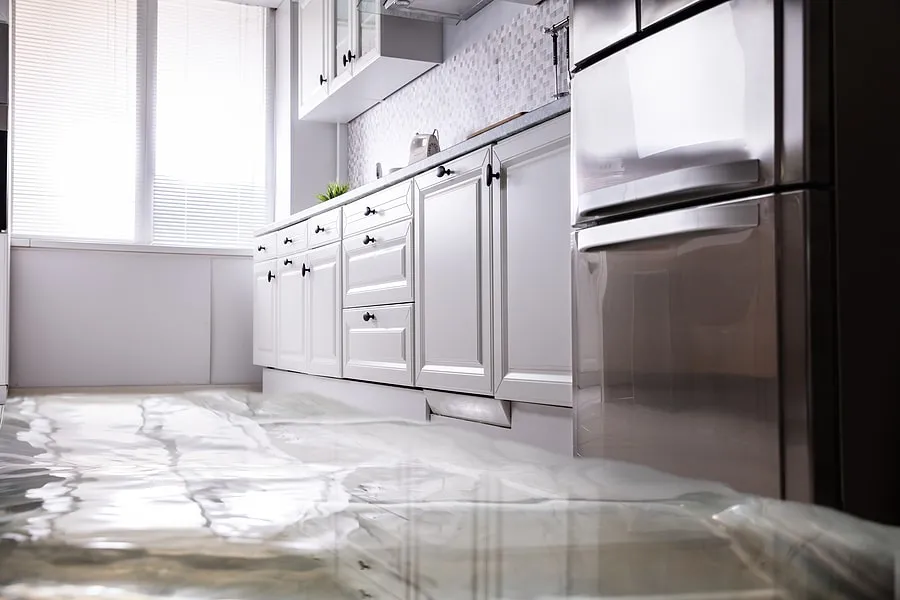Water Damage Restoration Explained

Water damage restoration is a crucial process that homeowners and property owners need to understand. When faced with water damage, whether from a burst pipe, natural disaster, or plumbing issue, it is essential to act quickly to minimize the potential for further damage. This article aims to provide a comprehensive explanation of the water damage restoration process.
The first step in water damage restoration is assessing the extent of the damage. Trained professionals will evaluate the affected areas and determine the necessary actions required for repair and restoration.
Next, water extraction and removal are performed using specialized equipment. The goal is to eliminate all standing water and moisture from the affected areas.
Drying and dehumidification follow immediately after, ensuring that any remaining moisture is completely eliminated. This step helps prevent mold growth and further structural damage.
Once the area is dry, repairing and restoring damaged areas can begin. This may involve replacing damaged materials such as drywall or flooring.
Finally, preventing future water damage becomes a priority. Experts may recommend measures such as regular maintenance, proper drainage systems, or installing sump pumps to mitigate future risks.
Understanding this step-by-step process can help homeowners make informed decisions during an unfortunate situation involving water damage.
Assessing the Extent of the Damage
You’ll need to carefully examine the affected areas and determine the full scope of the damage, taking into account not only what is visible on the surface but also any potential hidden issues that may have been caused by water infiltration. Start by checking for signs of water damage such as discoloration, warping, or mold growth. Use moisture meters or thermal imaging cameras to detect hidden moisture and assess structural integrity.
Water Extraction and Removal
To effectively address excess moisture, the first step is extracting and removing it from the affected area. Water extraction and removal are crucial in preventing further damage to the property. Water damage restoration Mississippi professionals use specialized equipment such as pumps and vacuums to quickly remove standing water. They also utilize dehumidifiers and air movers to dry out any remaining moisture. This process helps prevent mold growth and ensures a thorough restoration of the affected area.
Drying and Dehumidification
Using specialized equipment, professionals swiftly remove excess moisture from the affected area, employing dehumidifiers and air movers to create a dry and breathable environment. Dehumidifiers work by pulling in moist air and extracting the water vapor, while air movers enhance evaporation by circulating the air. This combination effectively accelerates the drying process, preventing further damage such as mold growth. Professionals monitor humidity levels throughout to ensure optimal conditions are achieved for complete restoration.
Repairing and Restoring Damaged Areas
Once excess moisture has been removed, professionals can swiftly repair and restore the damaged areas to their original condition, ensuring a seamless transition from destruction to renovation. They will assess the extent of the damage and devise a plan for repairs. This may involve replacing drywall, flooring, or other materials that were affected by water damage. Skilled technicians will work diligently to restore the space back to its pre-damaged state, using specialized tools and techniques as needed.
Preventing Future Water Damage
By taking proactive measures, homeowners can avoid future water damage and save themselves from the headache of costly repairs. One important step is to regularly inspect the home for any signs of leaks or water damage. This includes checking pipes, faucets, and appliances that use water. Installing a sump pump in the basement can also help prevent flooding during heavy rainstorms. Additionally, keeping gutters clean and properly maintained ensures that water is directed away from the foundation of the house.
Conclusion
In conclusion, water damage restoration is a crucial process that involves assessing, extracting, drying, repairing, and preventing future water damage. It requires the expertise of professionals to accurately assess the extent of the damage and use appropriate techniques for extraction and removal. Drying and dehumidification are essential to prevent further damage and mold growth. Lastly, repairing and restoring damaged areas ensures that the property is restored to its pre-damaged condition. By taking preventive measures, homeowners can minimize future water damage risks.

